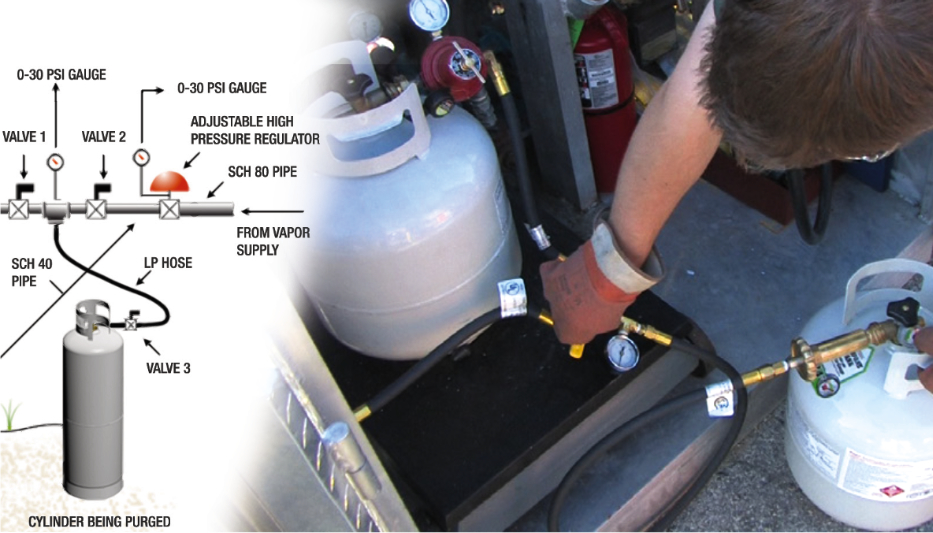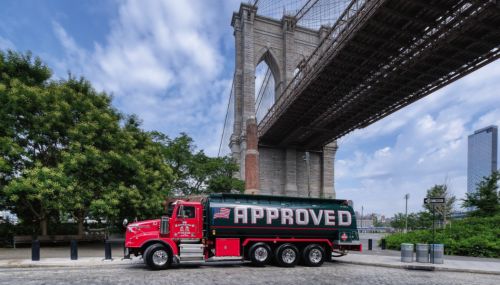All
Did You Know?
by Trent Johnson, Bergquist, Inc.

Vacuum-purged propane containers can have effects on new appliances
Vacuum-purged propane containers are delivered with a sealed vacuum purge, which is completed at the manufacturing facility. When new vacuum-purged containers are introduced into service, they typically have methanol drawn into the container using a vacuum. Propane is then added to the cylinder or tank. The vacuum purge allows for a cleaner container with fewer contaminants, which should ultimately lead to straightforward propane installations.
This year marks my 31st anniversary in the propane industry and after all my years of experience and familiarity, I can still learn something new about the business in some form or fashion. Recently, it was the effects that vacuum-purged propane containers have on certain newer appliances.
Not too long ago I had a conversation with a propane marketer from central Virginia regarding issues with a recent water heater installation. The propane marketer’s service manager informed me about a new Rinnai Sensei tankless water heater model shutting down soon after it was put into service. The propane tank was full — the propane liquid level was at 80 percent — and included additional methanol to mitigate any potential freeze-up problems. After some troubleshooting, the service manager learned that a new vacuum-purged propane tank (for propane vapor distribution) dedicated solely to a new Rinnai tankless water heater caused the unit to shut down. How come?
The Rinnai unit’s sensors were so sensitive they detected a vacuum even after introducing propane into the container.
The propane marketer in Virginia eventually connected an older, previously used 100# DOT cylinder to the new propane-vapor distribution system dedicated to the Rinnai Sensei tankless water heater. Needless to say, the unit started and ran without issue. The new, vacuum-purged propane tank, without a proper propane-vapor purge, was then reconnected to the system, and the tankless water heater locked out and would not start. The Rinnai Sensei tankless water heater sensors detected the vacuum once again. The propane marketer conducted a propane-vapor purge on the new vacuum-purged propane container and the issue of the Rinnai Sensei tankless water heater shutting down prematurely was finally resolved.
If a propane-vapor distribution system is dedicated to a newer appliance (e.g., a Rinnai Sensei tankless water heater), a new vacuum-purged container must be purged by evacuating the vacuum. Ideally, the container should be purged using propane vapor at 15 psig. Evacuate the propane vapor and repeat the process with three additional propane-vapor purges. In other words, a good old-fashioned propane-vapor purging is required to remove the vacuum completely.
It was interesting to learn after all of my years in the industry that if other appliances are connected to a propane-vapor distribution system, it is good practice to start and run those appliance before introducing an appliance with ultra-keen sensors like a Rinnai Sensei tankless water heater. Starting and running the other propane appliances before the tankless water heater will reduce the system’s vacuum and prevent potential startup issues.
It is important to note that all of the technical service information regarding new, vacuum-purged propane containers and their effects on Rinnai tankless water heater models is also available from Rinnai’s technical department.
This experience is confirmation that, in the propane industry, we all have the opportunity to learn something new every day – no matter how much experience we may have.
Trent Johnson is Mid-Atlantic Sales Manager at propane equipment distributor Bergquist, Inc. He can be reached at 540-842-2109 or trent.johnson@bergquistinc.com.
Related Posts
 From Blue Flame to Biofuels
From Blue Flame to Biofuels
Posted on June 25, 2025
 HEAT Show Announces Fenway Park Backyard BBQ
HEAT Show Announces Fenway Park Backyard BBQ
Posted on May 15, 2025
 Delivering New York City’s Clean Energy Solutions
Delivering New York City’s Clean Energy Solutions
Posted on May 14, 2025
 Are You a Leader or a Boss? The Choice is Yours
Are You a Leader or a Boss? The Choice is Yours
Posted on May 14, 2025
Enter your email to receive important news and article updates.
